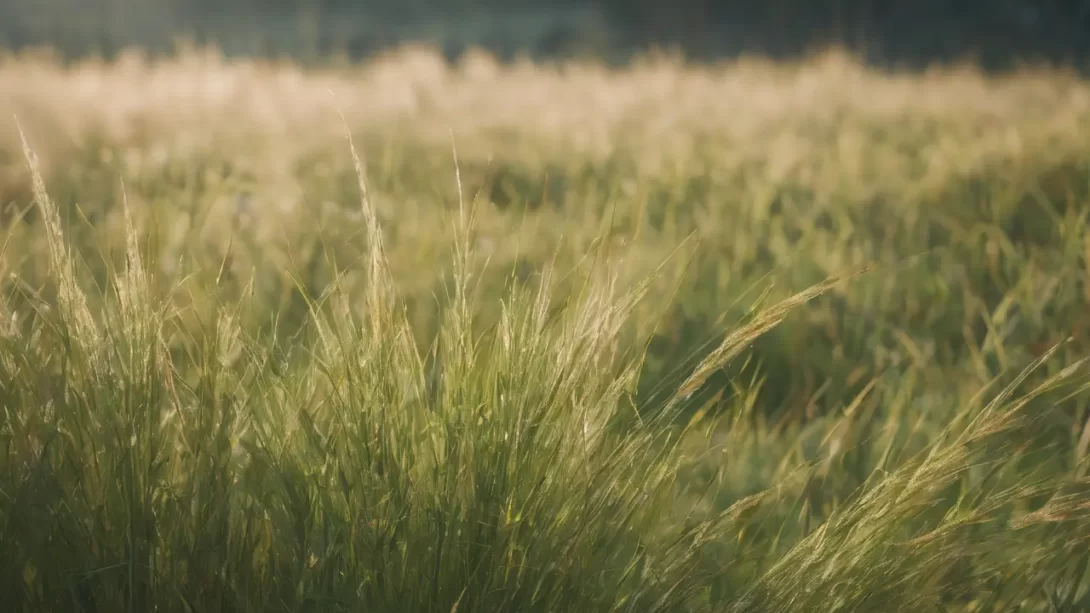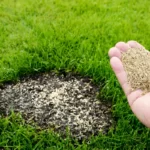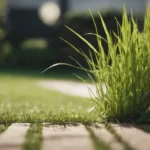Bahia grass, known scientifically as Paspalum notatum, is a tough, perennial grass that can be both a blessing and a bane for gardeners. Originally from South America, it has become a common sight in many lawns, especially in warmer climates. While Bahia grass is valued for its drought resistance and ability to thrive in less fertile soils, it can quickly become invasive, overpowering other grass species in your lawn. The challenge lies in eliminating Bahia grass without harming the more desirable grasses, a task that requires a careful, strategic approach.
Bahia Grass
To effectively combat Bahia grass, it’s crucial to understand its characteristics. This grass is easily recognizable by its V-shaped blade and distinctive Y-shaped seed heads. It primarily spreads through seeds but can also extend through its robust root system. Bahia grass prefers sandy soil and is commonly found in pastures, roadsides, and, of course, lawns. It’s often considered a nuisance in gardens due to its coarse texture and tendency to form clumps, which can disrupt the uniformity of a lawn. Understanding its growth habits is key to controlling and eventually eradicating it from your lawn.
Preventive Measures
The first line of defense against Bahia grass is maintaining a healthy, dense lawn that can outcompete invaders. A well-cared-for lawn is less likely to have Bahia grass issues. Here are some preventive measures:
- Mowing: Keep your lawn at the ideal height for your grass type. Mowing too short can stress the grass and make it more susceptible to invasions.
- Watering: Deep, infrequent watering encourages the growth of deep roots for your desired grass, making it more resilient.
- Fertilization: Regular fertilization, according to the needs of your specific grass type, helps maintain its health and vigor.
- Soil Health: Conducting a soil test to understand your soil’s nutrient profile can guide you in amending it appropriately, discouraging Bahia grass growth.
By following these practices, you can create an environment where your preferred grass thrives, leaving little room for Bahia grass to establish itself.
Manual Removal Techniques
For small infestations, manual removal of Bahia grass can be effective. This method is labor-intensive but ensures minimal impact on surrounding grasses. Here’s how to proceed:
- Identify and Isolate: Locate Bahia grass clumps and carefully isolate them from the rest of your lawn.
- Digging Out: Use a shovel or a garden fork to dig around the Bahia grass, ensuring you go deep enough to remove the roots. Bahia grass has a deep root system, so thoroughness is key.
- Root Removal: Once the clump is dug up, shake off excess soil and sift through to remove any leftover roots, as these can potentially regrow.
- Disposal: Dispose of the Bahia grass and its roots in a way that they can’t spread to other areas.
- Repair the Area: Fill the dug-out spots with topsoil and seed with your preferred grass variety to prevent Bahia grass from re-establishing.
Selective Herbicides
When manual removal isn’t feasible, especially in larger infestations, selective herbicides can be a practical solution. These chemicals are formulated to target specific weeds, like Bahia grass, without harming other grass species. Consider these points when choosing a herbicide:
- Active Ingredients: Look for herbicides containing active ingredients known to be effective against Bahia grass. For example, herbicides with metsulfuron or imazaquin can be effective.
- Compatibility with Lawn Type: Ensure the herbicide is safe for the type of grass you have in your lawn. Some herbicides may harm certain grass species.
- Timing: The effectiveness of herbicides can depend on the time of year they’re applied. Generally, it’s best to apply when Bahia grass is actively growing.
- Selective vs. Non-Selective: Be sure you are using a selective herbicide, as non-selective herbicides will kill any vegetation they come into contact with, including your lawn grass.
Understanding the specifics of the herbicide you choose is crucial for effective and safe application. Always read and follow label instructions to minimize risks to your lawn and the environment.
Application of Herbicides
Applying herbicides requires precision and care. Here’s how to do it right:
- Preparation: Before application, mow your lawn to ensure better herbicide penetration.
- Equipment: Use a sprayer that allows for accurate application. Calibration is key to ensure you’re applying the right amount.
- Application: Apply the herbicide uniformly across affected areas. Avoid over-application, which can harm your lawn and the environment.
- Safety Measures: Wear protective gear, including gloves and a mask, and keep pets and people off the lawn until the herbicide has dried.
- Follow-Up: It may take several weeks to see results. A second application might be necessary for persistent infestations.
Properly applying herbicides can significantly reduce Bahia grass populations while preserving the integrity of your lawn. Patience and precision are essential in this step.
Aftercare and Recovery
Once Bahia grass has been removed, focusing on lawn recovery is crucial. A healthy, dense lawn is less likely to experience weed problems in the future. Here are some steps for effective aftercare:
- Lawn Repair: If herbicide application or manual removal has left bare patches, reseed these areas promptly. Choose a grass seed that matches your existing lawn and is suited to your region’s climate.
- Watering: Regular watering is essential for new grass to establish. Keep the soil consistently moist but not waterlogged to encourage growth.
- Fertilization: Apply a balanced fertilizer to support the growth of new grass. Ensure it’s suitable for your lawn type and follow the manufacturer’s guidelines for application.
- Monitoring: Keep an eye on the treated areas for any signs of Bahia grass resurgence. Early detection and treatment can prevent another full-blown infestation.
- Regular Maintenance: Continue with regular mowing, watering, and fertilizing to maintain a robust and healthy lawn.
Long-term Management Strategies
Preventing the return of Bahia grass requires ongoing attention and lawn care practices. Here are some strategies for long-term management:
- Regular Lawn Assessment: Periodically assess your lawn for early signs of Bahia grass or other weeds. Early intervention is key to control.
- Soil Health Management: Regularly test your soil and adjust the pH and nutrient levels as needed. Healthy soil supports healthy grass, which is less inviting to weeds.
- Integrated Pest Management (IPM): Employ IPM strategies that focus on long-term prevention of pests and diseases through a combination of techniques such as biological control, habitat manipulation, and use of resistant varieties.
- Diversification: Consider introducing a mix of grass species that are well-suited to your local environment. A diverse lawn can be more resilient to pests and weeds.
Conclusion
Eliminating Bahia grass without harming your lawn is a multifaceted task that requires understanding, patience, and consistency. By combining manual removal, selective herbicide use, and diligent aftercare, you can successfully rid your lawn of this invasive grass. Remember, the key to a healthy, Bahia grass-free lawn lies in ongoing maintenance and regular care. With these strategies, your lawn can continue to be a lush, inviting space free of unwanted weeds.




